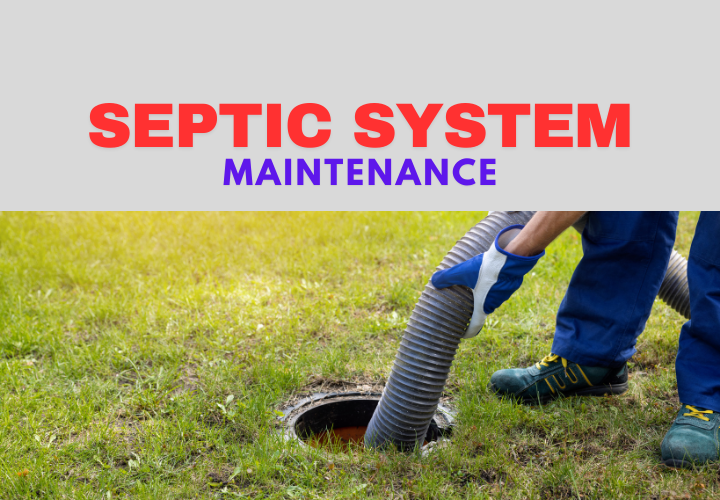Table of Contents Show
5 Ways to Maintain Your Septic System Effectively
Your septic system is one of the most critical components of your home’s infrastructure, yet it often goes unnoticed until something goes wrong. Proper maintenance not only ensures the longevity of your system but also prevents costly repairs and unpleasant situations. Here are five essential ways to maintain your septic systems as homeowners.
1. Regularly Inspect and Pump Your Septic Tank
Regular inspections and pumping are the foundation of septic system care. Most experts recommend having your septic tank inspected every 3 to 5 years and pumped out as necessary, depending on the household size and water usage.
Why It’s Important:
Over time, solid waste accumulates in the tank and can overflow into the drain field, causing blockages and system failure.
2. Use Water Wisely
Conserving water reduces the strain on your septic system. Excess water can overwhelm the tank, preventing solids from settling properly and leading to overflow into the drain field.
How to Conserve Water:
- Fix leaky faucets and toilets promptly.
- Install water-efficient appliances, such as low-flow showerheads and toilets.
- Spread out laundry loads to avoid overloading the system in a single day.
3. Be Careful What Goes Down the Drain
Your septic system is not designed to handle everything you throw at it. Proper waste disposal is essential for its health.
Items to Avoid:
- Non-biodegradable items: Baby wipes, feminine hygiene products, and plastic wrappers.
- Chemicals: Paint, oil, and harsh cleaning agents can kill the beneficial bacteria in your septic system.
- Food waste: Grease, fats, and large food particles can clog pipes.
4. Protect Your Drain Field
The drain field is where the treated wastewater is absorbed into the ground. Protecting this area is crucial for the overall function of your septic system.
Best Practices:
- Do not park vehicles or place heavy objects on the drain field.
- Plant only grass or shallow-rooted plants over the area to prevent roots from damaging pipes.
- Redirect surface water, such as rain runoff, away from the drain field.
5. Avoid Overusing Septic Additives
While some septic additives claim to enhance system performance, they can sometimes do more harm than good. Overuse of additives can disrupt the natural bacterial balance in your tank.
What Experts Recommend:
Focus on regular pumping and inspections instead of relying on additives. Natural bacterial processes are usually sufficient to break down waste.
FAQs About Septic System Maintenance
1. How often should I pump my septic tank?
Most septic tanks should be pumped every 3 to 5 years, depending on household size and water usage. Regular inspections can help determine the right schedule for your system.
2. Can I flush “flushable” wipes?
No. Despite the label, flushable wipes do not break down easily in septic systems and can cause blockages. Dispose of them in the trash instead.
3. What are the signs of a failing septic system?
Warning signs include slow drains, sewage backups, foul odors, and soggy areas around the drain field. Address these issues promptly to avoid system failure.
4. Can I use bleach and other household cleaners?
Small amounts of household cleaners are typically fine, but excessive use of bleach or harsh chemicals can kill beneficial bacteria in your septic tank. Opt for septic-safe products whenever possible.
5. Is it okay to plant trees near my drain field?
No. Tree roots can invade and damage the pipes in your drain field. Stick to grass or shallow-rooted plants for landscaping over this area.
Finally:
Maintaining your septic system is essential for your home’s functionality and your family’s well-being. By following these five steps—regular inspections, water conservation, mindful disposal, drain field protection, and avoiding overuse of additives—you can ensure a healthy, long-lasting system.
Investing in proper maintenance not only saves you money in the long run but also protects the environment.








